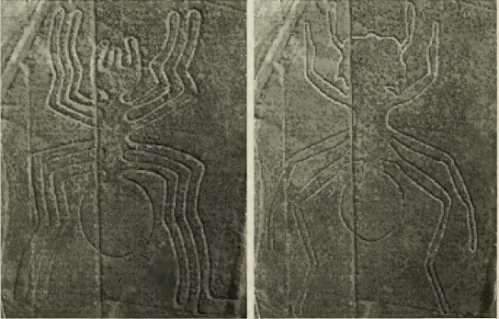Today, I came across this picture:
This is Figure 1 from a massive manuscript on Cephalotes by de Andrade and Baroni Urbani (1999). It includes the following caption:
Aerial view of one of the lines of Nasca (Peru) representing abstract animal contours (left) and the contour of a worker of Cephalotes atratus (LINNAEUS) drawn in the same style (right). The Nasca design was interpreted as a spider, essentially because it has four pairs of legs. We contend that the Nasca design might refer to a cephalotine ant as well. The reasons for this claim are twofold: (1) cephalotines are much more common and impressive than spiders, and, (2) the Nasca design bears a typical insect character contradicting the spider interpretation, namely the separation between head and thorax. This latter character is considered as being of easier observation than the number of appendages.
I find this interpretation to be quite compelling. At the very least, it’s entertaining to think that the pre-Columbian Nazca people appreciated turtle ants so much that they incorporated them into such fascinating artwork. We really shouldn’t be surprised if this is this case – turtle ants are famous for their well-documented behavior of using their heads to block the nest entrances, and several species have highly specialized soldiers so dedicated to this form of defense that their heads are basically just saucers:

(Image: Alex Wild)

(Image: Alex Wild)
Although the true inspiration for these Nazca lines may never be known for certain, I’m adding this to the pile of evidence that clearly shows that cultures around the world hold a timeless appreciation for ants.
Citation
De Andrade, M. L. and Baroni Urbani, C. Diversity and adaptation in the ant genus Cephalotes, past and present. Stuttg. Beitr. Naturk. Ser. B (Geol. Paläontol.) 271:1-889.




